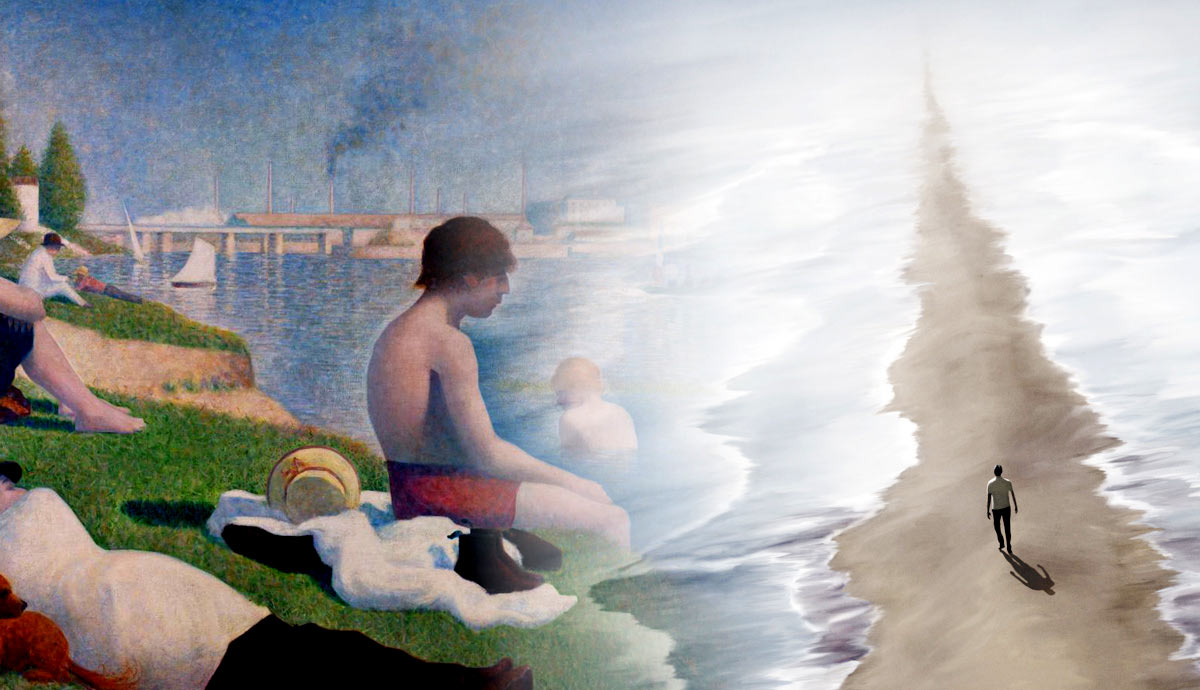
How often do you walk in a forest or large park? Remember the last time you turned off all gadgets and enjoyed simple contemplation in nature? This action has a name—friluftsliv, which in Norwegian means “life in the fresh air.”
But what exactly is the secret behind this Norwegian philosophy? Prepare to be inspired by the philosophy of friluftsliv.
What Is Friluftsliv?

Every era produces its own philosophy. Hygge was really widespread some time ago—the Scandinavian tradition of wrapping oneself in a blanket and woolen socks, with a warm beverage in your hands seemed like a great pastime.
But, of course, the pandemic did not leave us indifferent: staying at home became unbearable for many, however many cups of cocoa we made ourselves. A new and more apt trend came into the spotlight—friluftsliv.
In the word “friluftsliv,” fri means freedom, luft means air, and liv means life. In 1835, in one of his poems, Henrik Ibsen coined this term. No more than a few decades later, the traveler Fridtjof Nansen would popularize it through his book of the same name. But the very philosophy of outdoor life has its roots much earlier than its name.
Friluftsliv embodies the belief of forging connections with nature by embracing new experiences of active engagement. Rather than mere leisurely trips or strolls, friluftsliv entails deliberately integrating nature into our everyday existence, recognizing our integral role within the environment.

Sometimes. friluftsliv is described as tourism, but this is not exactly true. Friluftsliv has nothing to do with goals (walking 10 km, climbing to the top of a mountain, etc.), but what the actual process of being in nature gives back to us—contemplation, sensation, and rethinking.
During sunny days, when one climbs a challenging mountaintop or wanders through rich, green forests, an ethereal expanse unveils from the hum of life in these natural refuges. Pretense, illusion, and social facade disintegrate into oblivion. One is presented with the precious chance to really dwell within oneself, with full attention, listening deeply to one’s inner voice and letting go, and enjoying the eternal here and now.
Imagine what would happen if this kind of practice was included in your life as much as possible, no matter your schedule or the season. Do you think that this will contribute towards becoming calmer and more aware? Good! You are beginning to grasp the Norwegian’s mentality!
The Key Elements of Friluftsliv Philosophy

The Norwegian word friluftsliv consists of three parts: fri, luft, and liv, which are the basis of the concept. Each word is related to a specific aspect of the philosophy, and together they form what has become known as the foundation for friluftsliv:
Fri—“Freedom”
Within friluftsliv, freedom is, first of all, the ability to break away from gadgets and material things and be independent of civilization and informational noise. This philosophy requires studying nature with a specific attitude—walking around undisturbed, not picking flowers, collecting butterflies, or otherwise disturbing the environment.
Secondly, freedom within friluftsliv extends to the refusal of fashion habits in favor of practicality and convenience. Accordingly, Norwegians do not wear ties and coats, even in the summer; Norwegian women prefer long dresses and overcoats.
It is worth noting that Norwegians dress appropriately for winter conditions because they want to avoid any negative consequences resulting from dramatic weather changes—caught by surprise, unexpectedly cold or warm weather can cause health problems in addition to ruining clothes and frosting one’s face.
They realize that dressing in layers is a very useful habit that enables them to easily discard or put on clothes close to body temperature as needed.
Luft—“Air”

Norwegians love the outdoors and care for their countryside as a natural habitat. Deeply connected to this environment throughout childhood, they learn to take nature into account, and any action’s consequences should be considered before doing anything.
The rule of Allemansrätten (“freedom to roam”), since 1957 enshrined at the legislative level in Norway, requires a respectful attitude towards nature and its assets.
In addition, it recognizes equal rights of entry for all citizens and tourists. In Norway, the promotion of tourism on private property is legal if verbal consent was given by the owners of this property beforehand.
Liv—“Life”
Norwegians take “friluftsliv” literally, like the idea of life in nature. Norwegians believe that nature should feel like a house where you are safe and comfortable without fear or insecurity.
People from Norway mostly go outside three times a week. There are state-funded points inside the country where you can rent camping equipment. Back home, people respect and care for one another with their donations to relief organizations as well.
Additionally, an awesome number of Norwegians show initiative to look after hiking trails and ski runs, which are typically in pristine condition, along with tiny cabins usually used as shelters by fellow travelers while they walk or hike themselves. And it’s only 20 minutes to get to the forest from the middle of Oslo!
The Many Benefits of Friluftsliv

Friluftsliv has the ability to unleash one’s body’s potential in ways that go beyond advancing in the gym.
Engaging in outdoor activities may very well be on par with giving your body an exhilarating hug. Climbing down a mountain and coming back up again, or skiing down snowy slopes, or cycling through breathtaking landscapes; these are all different ways of enjoying the outdoors.
Imagine your body as if it were a finely tuned instrument: it longs for movement. Sure, you could play the music on its own, but why not take the time to further tune it so you can allow yourself the freedom to unleash your full potential?
Movement isn’t just muscle development; it extends far beyond the core of our mental well-being. It’s like a magic spell against some of the dark forces plaguing our minds: stress, anxiety, and depression. It lets us pause upon life and all its chaotic hustle.
Friluftsliv teaches us to slow down in a world that always seems to speed by at lightning-pace. An afternoon walk in the fresh air can help us find clarity, creativity, and purpose out there.
Additionally, friluftsliv opens doors to amazing social experiences. When you head out on outdoor adventures, you also often find yourself among very similar people who bring others into your circle of friends (and sometimes more than mere friends). Getting to know these new kindred souls enriches our understanding and experience of friendliness around campfires or atop picturesque mountain peaks.
How to Stick to the Friluftsliv Philosophy?

Being outdoors reduces stress and improves health. It’s definitely worth trying friluftsliv, especially since you don’t have to go to the taiga or the mountains to live its philosophy.
To understand friluftsliv, you would need a love for nature. While there are more extreme ways of engaging with the outdoors, that’s not strictly necessary; friluftsliv is not only for extreme hikers and athletes.
Friluftsliv could also extend activities like campfires, fishing, berry picking, skiing, taking a night hike with your dog inside a park, and numerous other experiences of going out into the natural environment.
One of the main ideas of friluftsliv is disconnecting from everyday stress and reconnecting with nature.
In the Norwegian concept, one goes out into nature not for the sake of beautiful pictures but for the sake of spiritual experiences. Friendly gatherings near the fire, in many ways, revive the sense of integrity and belonging that has been lost in the modern world.
Moreover, Norwegians have a saying: there is no bad weather, only bad clothes! Most of all, comfort, waterproofness, and breathability are valued. For example, breathable yet warm woolen socks and hats are typical clothing that can help us live the friluftsliv life.
Along with wearing weather-appropriate clothing, Northerners also embrace the idea of “positive winter thinking” regarding weather. It’s best to embrace the beauty of snow and other winter elements. “Bad” weather is an opportunity to appreciate and respect nature in all its forms. Therefore, friluftsliv involves not only physical preparation but also mental readiness.
So, What Is Friluftsliv?

This term friluftsliv originates in Scandinavia and literally translates from Norwegian as “free air of life.” It consists of searching for happiness and a “sip of freedom” in nature—forests, fields, and fresh air. This is not about taking the occasional trip to the woods for a picnic or to take pictures, but about getting into a lifestyle of unity with nature on an ongoing basis.
For the residents of Norway, where this philosophy came from, it is very important to have their way of life in harmony with the environment, and therefore being outdoors has become ordinary in their society. Indeed, even the Norwegian government did not hesitate to sign a law providing free access for citizens to natural resources. Their use is possible both by the country’s population and tourists (subject to respect for the environment).
The concept may seem simpler than it really is. Freedom is not just the opportunity to use the power and energy of nature but also having a respectful attitude towards it. Preserving and protecting are also part of this philosophy.
In addition, this philosophy also aims at rejecting ingrained stereotypes and mainstream trends—this means freedom from social pressure, as well as choice in favor of personal convenience and comfort. In other words, adherents of friluftsliv will choose practicality and personal freedom over the rules and norms imposed by society.










